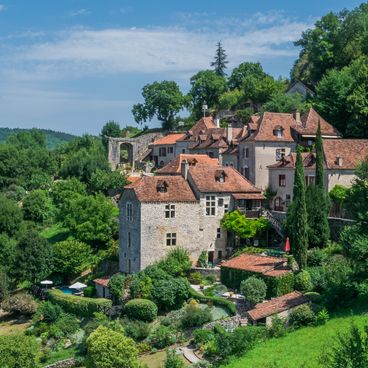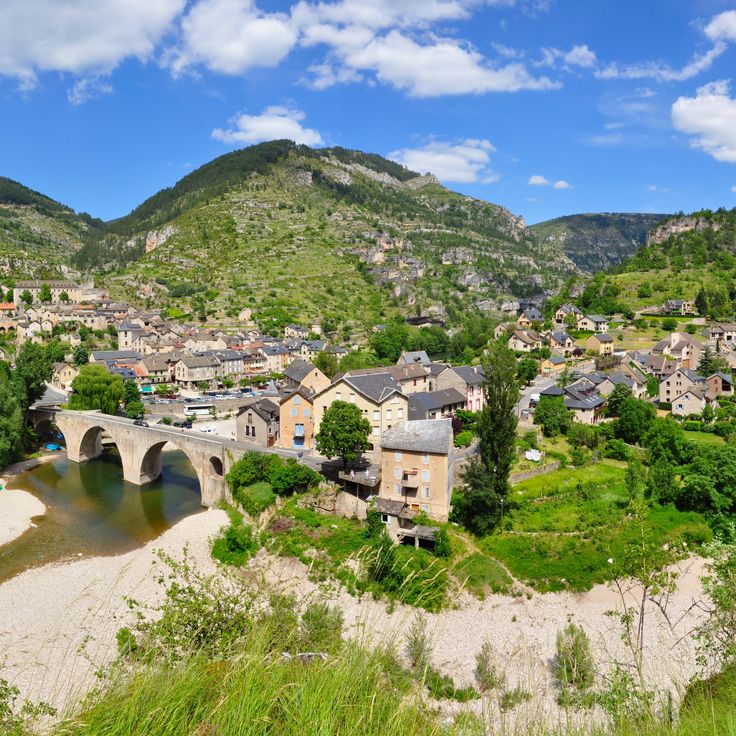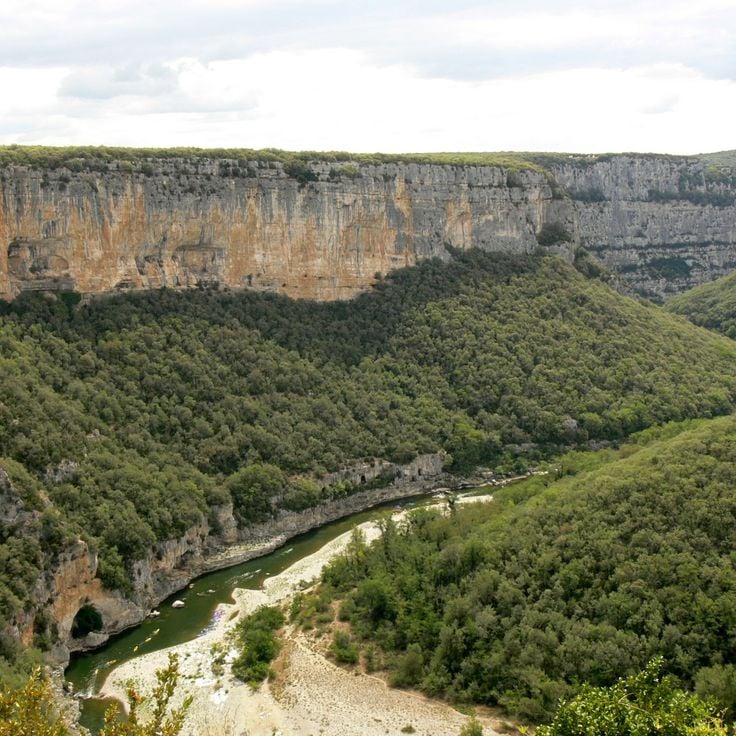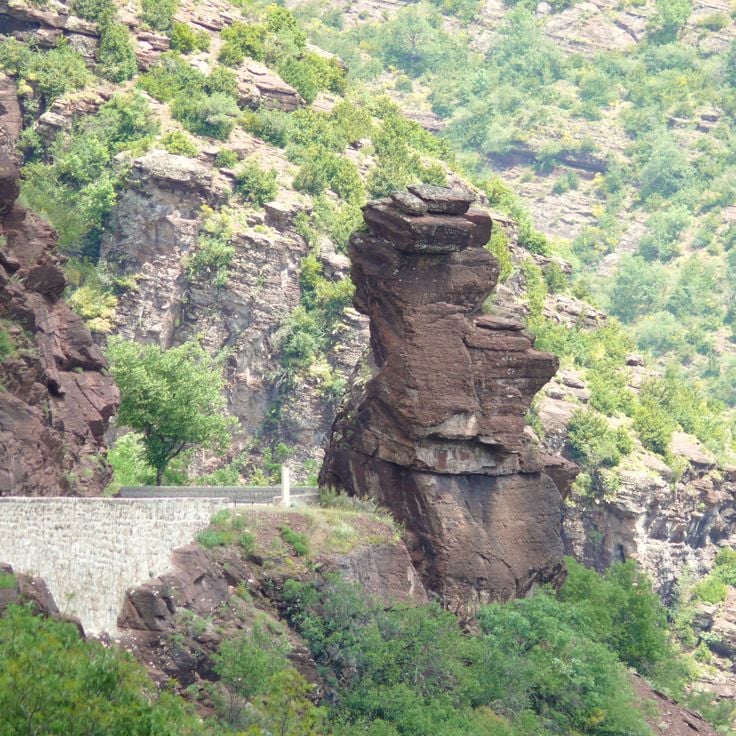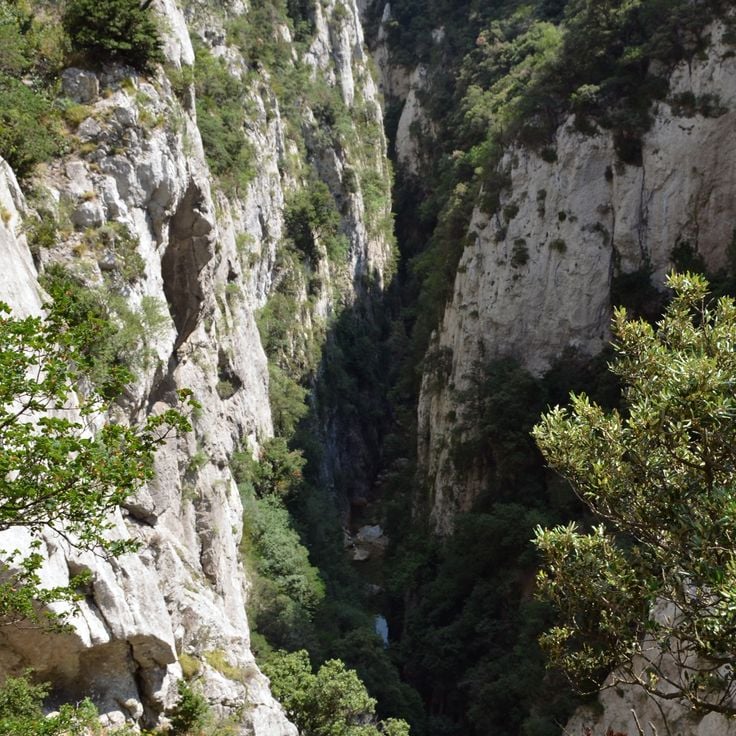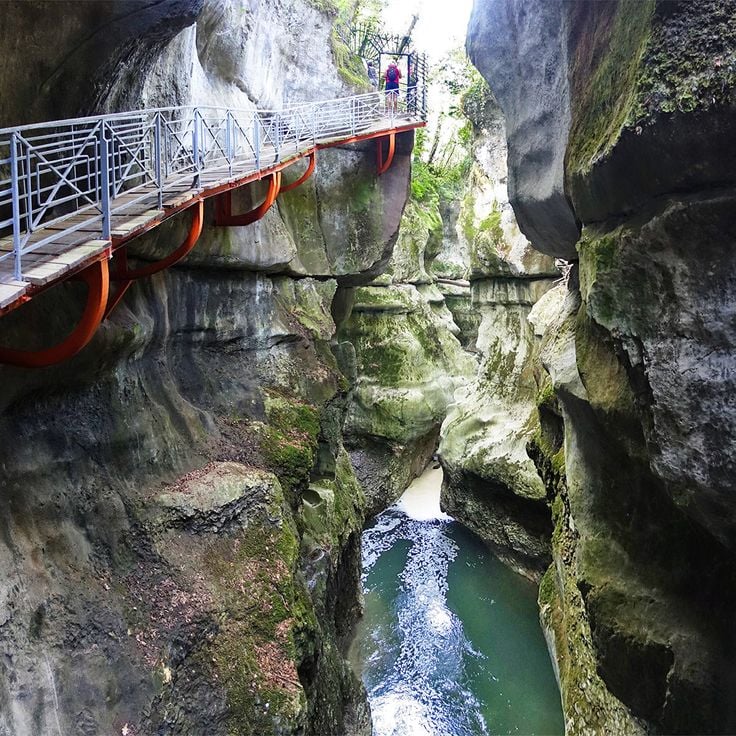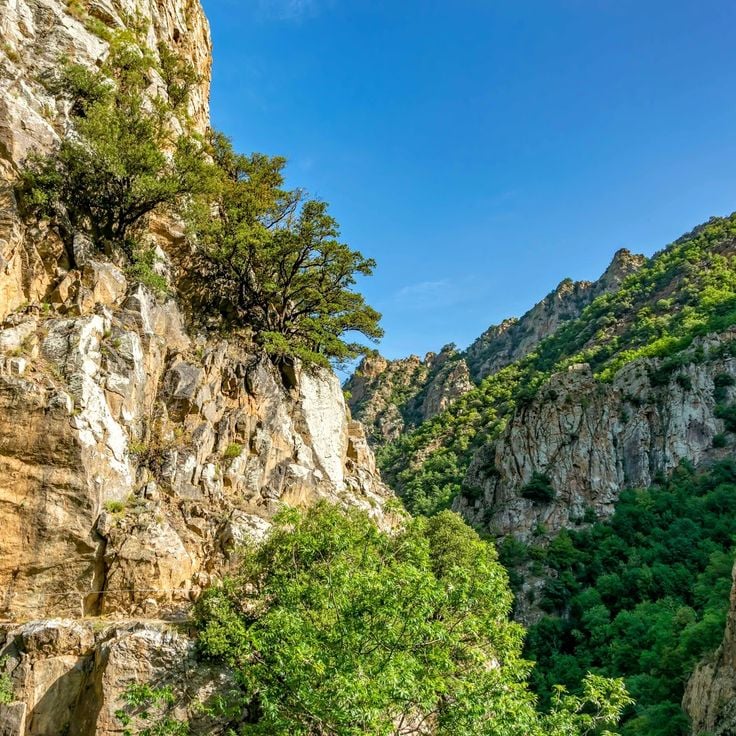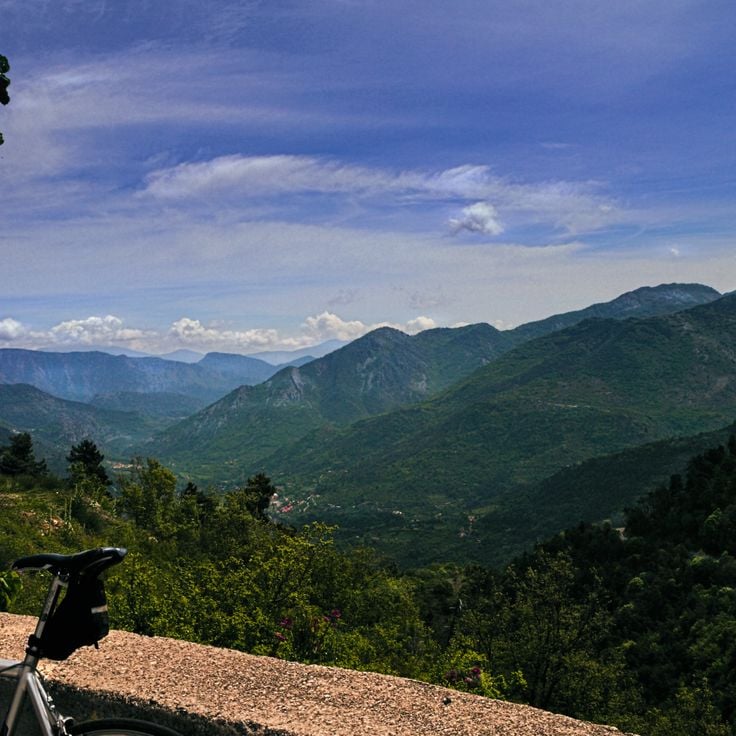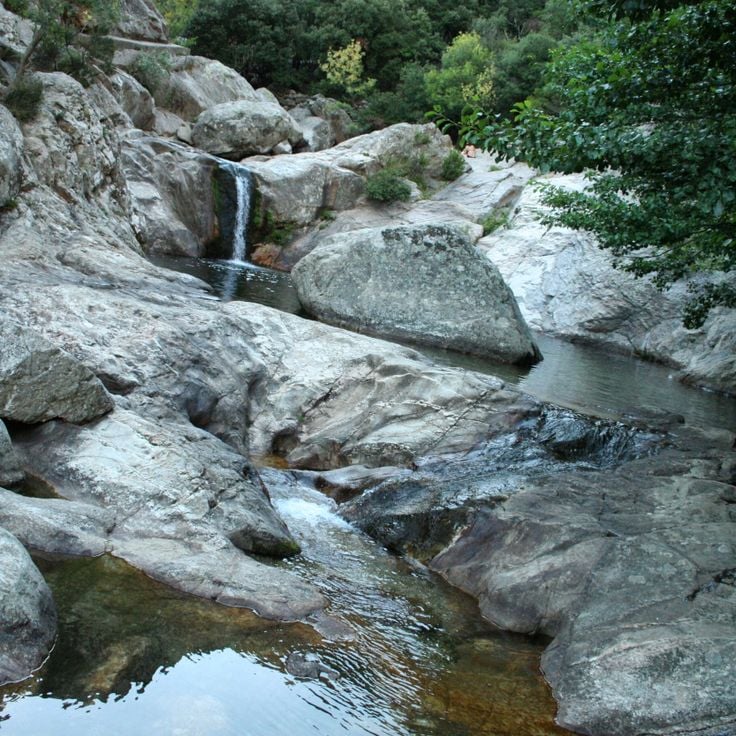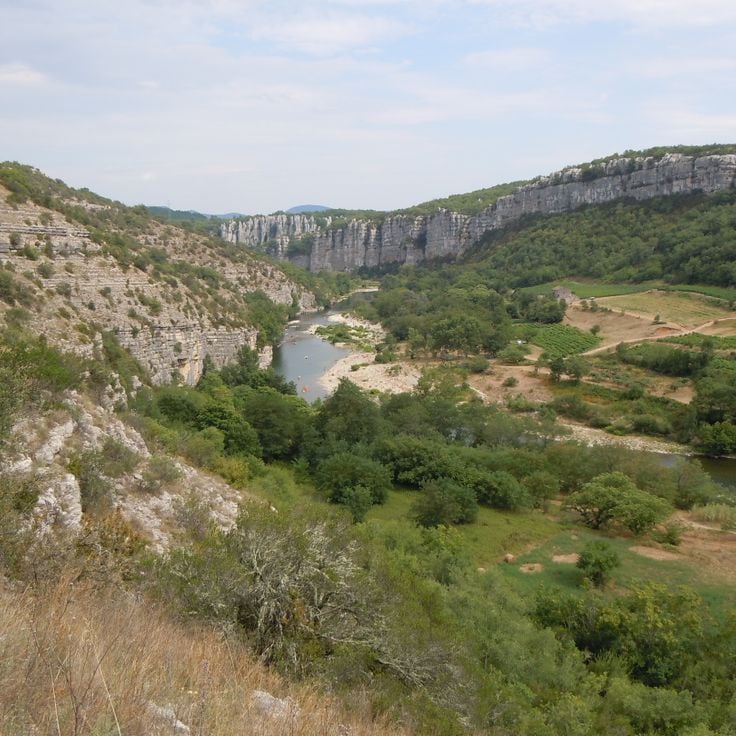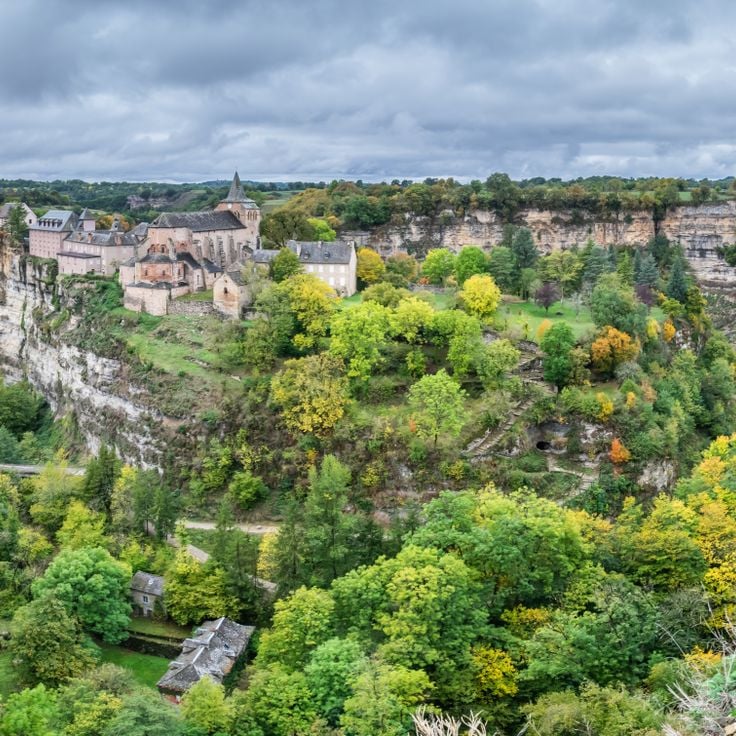France's landscape features a variety of natural canyons carved by river erosion over millennia. These geological formations include the white limestone walls of Verdon, the red shale cliffs of Daluis Canyon, and the emerald waters of Ardèche. Each site reflects a unique geological history, with depths ranging from a few tens of meters to over 700 meters. The Tarn gorges stretch 50 kilometers between the Causses, while Verdon has created Europe's deepest canyon. In the Pyrenees, the Gorges de la Carança and Gorges de la Fou offer pathways with metal walkways. The Alps host the Aiglun Gorge and Daluis Gorges, recognizable by their Permian red rocks. These natural sites are suitable for hiking, climbing, kayaking, and feature many viewpoints to observe these rock formations from nearby roads.
The Tarn Gorges extend for fifty kilometers between Florac and Millau in the Lozère department. The limestone walls rise up to five hundred meters above the riverbed in certain sections. The Tarn River has carved through the limestone plateau of the Causses over millions of years, creating this canyon. The gorges pass through varied landscapes with villages such as Sainte-Énimie and La Malène nestled along the banks. The rock faces display different geological formations with caves and terraces. The area provides opportunities for canoeing on the river as well as hiking trails along the canyon rims.
The Ardèche Gorges extend over 30 kilometers through limestone formations in southern France. The river has carved deep cuts into the rock, creating cliff walls that rise up to 300 meters. Along the watercourse, narrow passages alternate with wider sections. The gorges can be navigated by canoe or viewed from lookout points along the road. The natural rock arch Pont d'Arc marks the entrance to this geological formation.
The Daluis Gorges are formed by red rock formations from the Permian period. The Var River has carved this gorge through erosion, reaching a depth of 300 meters. The distinctive red coloring of the rock walls comes from iron-rich sediments. The river flows through this narrow passage between the Alpes-Maritimes and Var departments.
The Verdon Gorge extends for 25 kilometers through the limestone plateau of Haute-Provence. The Verdon River has carved this canyon over millennia, with rock walls rising up to 700 meters above the riverbed. Turquoise water flows through narrow passages between pale limestone cliffs. Hiking trails run along the upper rims and at the bottom of the gorge, while kayaking and climbing routes provide access to the river and vertical walls.
The Gorges de Galamus cuts through tall limestone cliffs and carries the Agly River through the Corbières region. The D7 road runs along the narrow gorge, passing through sections carved into the rock face. The Hermitage of Saint-Antoine de Galamus sits in a cave within the cliff wall. The gorge forms a natural boundary between the Aude and Pyrénées-Orientales departments.
The Gorges de la Bourne is a canyon in the Vercors massif carved by the Bourne river through limestone rock. The D531 road follows the river course between high rock walls. The route connects several villages and provides access to hiking trails along the canyon. The valley displays typical karst formations with steep cliffs and narrow passages.
The Clue d'Aiglun is a limestone gorge that reaches depths of up to 100 meters. Grey rock walls rise along the gorge, while the Estéron River flows through the narrow valley at the bottom. The geological formations demonstrate the erosion processes that have shaped the rock over thousands of years. Hiking trails run through the gorge and provide access to various viewpoints along the rock formation.
The Fier Gorges feature a 300-meter metal walkway suspended 25 meters above the water. The Fier River flows through this narrow limestone canyon, whose rock walls rise up to 70 meters high. The visitor platform provides views of the erosion patterns and water forces that have shaped this geological formation over thousands of years.
The Gorges de la Carança are a gorge in the Pyrenees, carved by the Carança River. A developed hiking trail follows the river through the narrow gorge, crossing several metal walkways, staircases, and suspension bridges fixed to the rock walls. This gorge extends for approximately two kilometers and provides access to waterfalls and natural pools. The path was originally built to service a hydroelectric plant and was later opened to hikers.
This gorge in the Pyrenees extends over 1.7 kilometers in length and reaches depths of 200 meters in certain sections. The Gorges de la Fou ranks among the narrowest canyons in Europe, with passages that narrow to just one meter in width at some points. A secured footpath with metal walkways and railings allows visitors to explore this geological formation. The rock walls display various layers of limestone and granite, crossed by waterfalls and natural pools. The Fou river has carved this deep incision into the bedrock over millions of years.
The Cians Gorges cut through red Permian rock formations in the hinterland of Nice. The Cians River has carved through layers of red schist and sandstone over millions of years, creating vertical walls that rise over thirty meters in places. The intense red coloring of the rocks comes from iron oxides in the Permian-era stone. The gorge extends between the villages of Touët-sur-Var and Beuil, offering various sections with different geological characteristics.
The Gorges de Piaon form a secluded canyon in the French countryside, characterized by natural water pools and limestone formations. The site receives few visitors and offers quiet swimming spots along the river course. The rock walls display typical erosion patterns and create shaded passages. Hiking trails run through the gorge and provide access to various water basins. The Gorges de Piaon are suitable for hiking and swimming in a natural setting.
This canyon was carved by the Verdon River through the limestone massif over thousands of years. The steep rock walls reach several hundred meters in height and frame the river course. Multiple waterfalls punctuate the cliffs along the valley. Hiking trails wind through the rock formations and follow the river's path. The water has left characteristic erosion patterns in the stone.
The Canyon de Vieussan features 50 kilometers of marked hiking trails through the Hérault department landscape. The paths cross Mediterranean scrubland with holm oaks, strawberry trees, and pines. The terrain displays limestone formations and rocky outcrops above the Orb valley. The routes connect several villages and provide access to viewpoints over the surrounding hills and valleys.
The Chassezac Canyon follows the course of the Chassezac River, which flows through granite rock formations and creates natural pools. This canyon offers opportunities for canoeing and swimming in clear water. The granite walls frame the river and create sections with both calm and moving water. The canyon attracts visitors seeking water sports activities in a natural setting.
The Bozouls Canyon was carved by the Dourdou River into the limestone plateau, forming a nearly circular gorge. The rock walls rise up to 100 meters above the riverbed. The medieval village of Bozouls sits directly on the edge of this geological formation. Several viewpoints provide views into the depths of the gorge and across to the limestone cliffs on the opposite side.
Similar collections
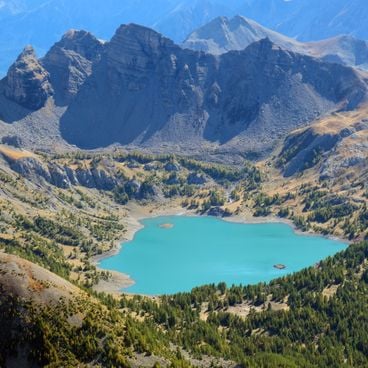
Natural areas in France: mountain lakes, limestone gorges, and forests
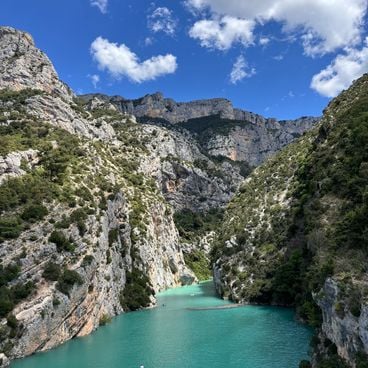
Motorcycle routes in France: Alpine passes, coastal roads, and historic circuits
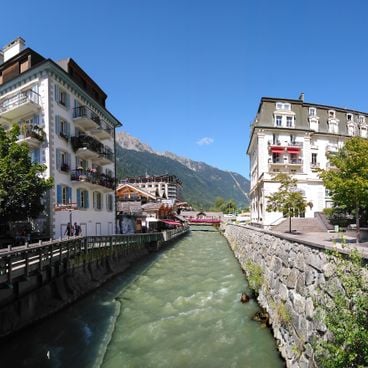
French winter destinations in cities and nature

Natural sites of the Alps: lakes, gorges, and peaks to discover
